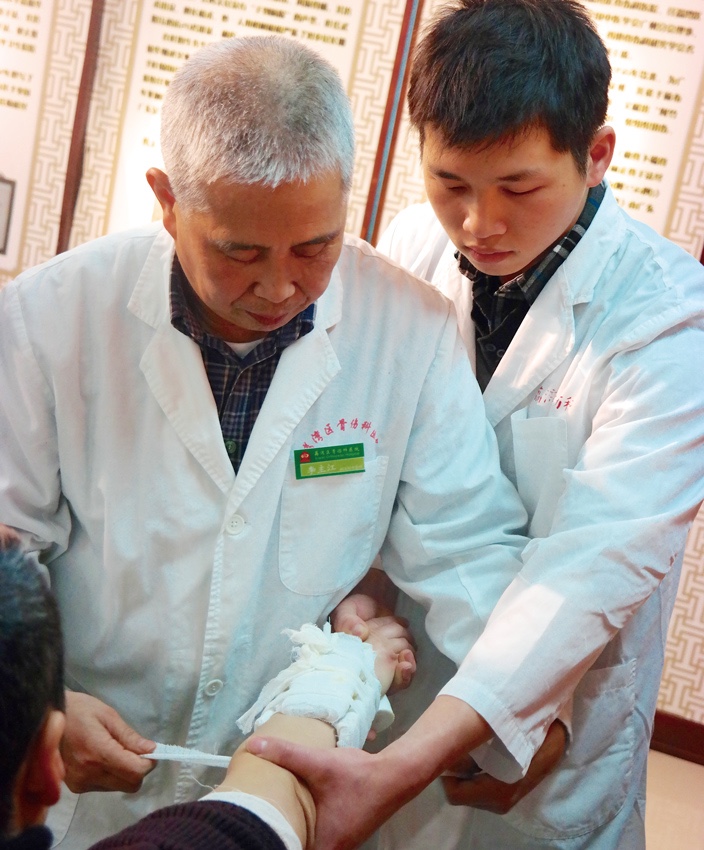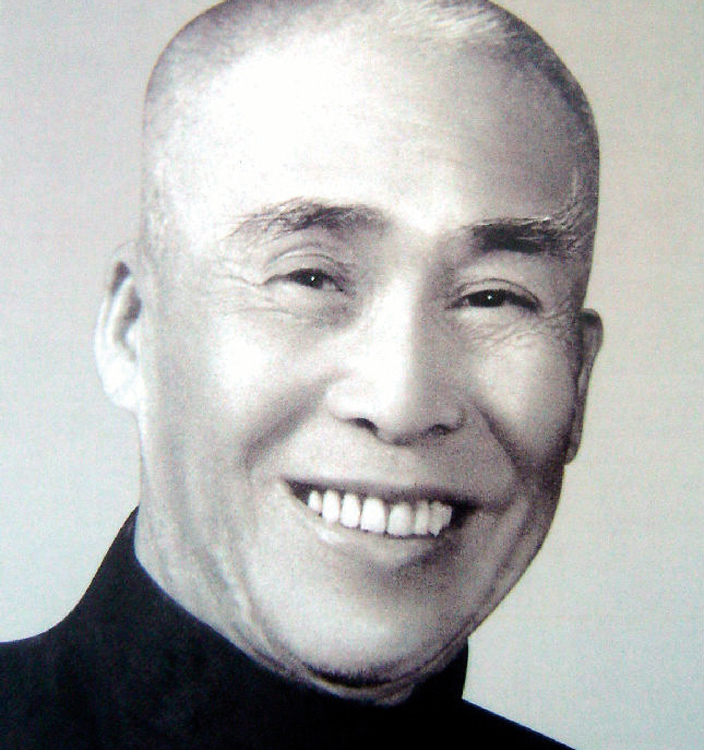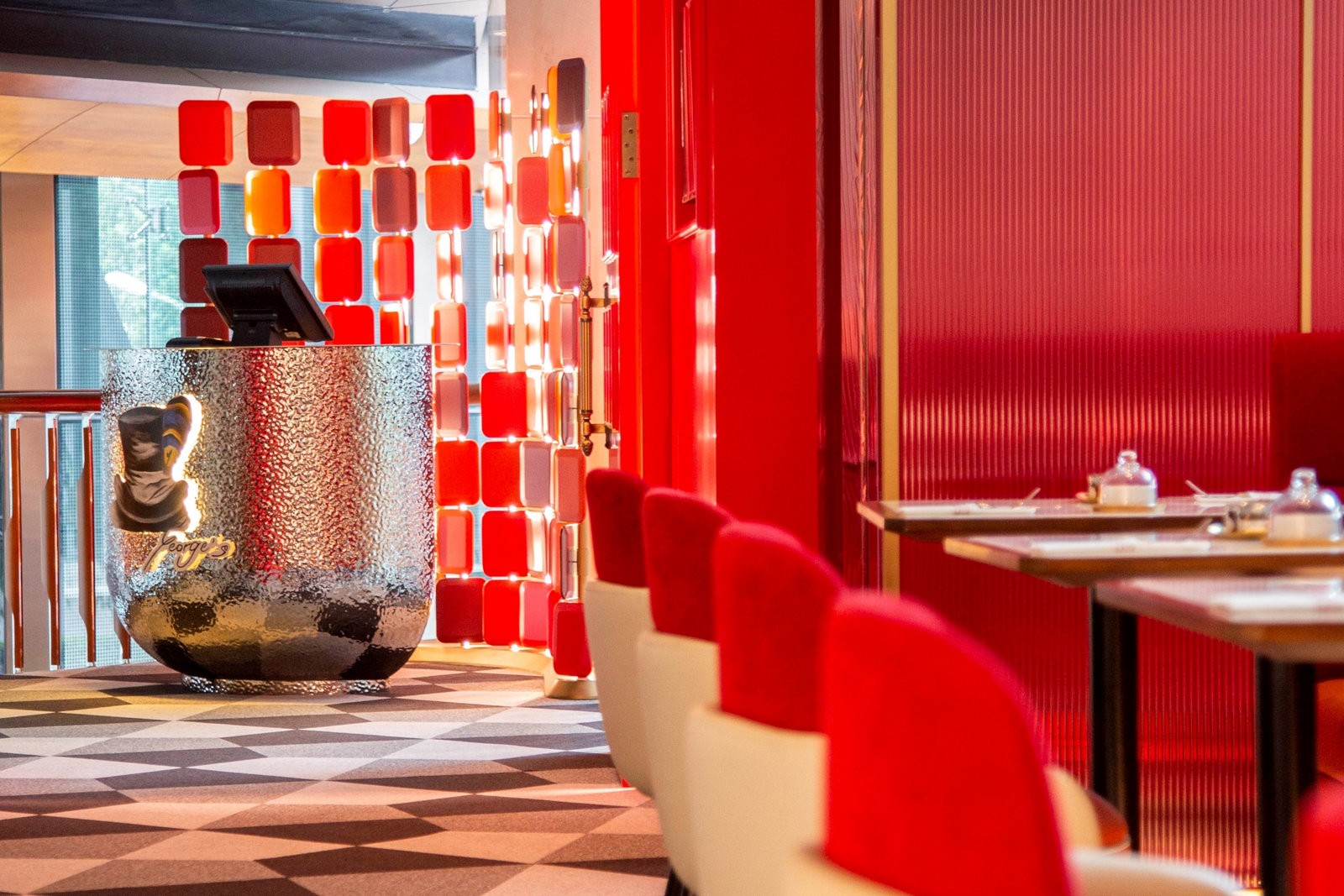Li Zhujiang strikes a pose, legs flexed in typical kung fu fashion, arms at the ready. A wounded man sits before him, eyes diverted away as if bracing for the first blow. To most onlookers, the scene resembles the final battle in martial arts saga Yip Man – not a doctor about to treat his patient.
Propelling his strength forward using focused core and leg muscles, Li proceeds to massage the man’s broken limb, applying an orange ointment with steady pressure. The herbal medicine’s cooling menthol seeps into the skin, easing excess tension.
So begins the first phase of Xiguan zhenggu, or Xiguan orthopedics – a medical procedure born over 300 years ago in Guangdong. Now a provincial intangible cultural heritage, the tradition has been passed down for generations, originating with some of the fiercest martial arts stars in the region.
Legendary hero Wong Fei-hung of Foshan (or ‘Master Wong’ as he’s known among fans) studied traditional Chinese medicine at Po Chi Lam, a clinic in Guangzhou, in the late 1800s. The sole inspiration behind nearly 20 modern martial arts films and television series in China – including Jackie Chan’s Drunken Master – Wong was one of the first athletes of his kind to study Xiguan orthopedics.
“Kung fu artists encountered this practice after they became injured,” explains Li, sitting in his part-office, part-museum in Tanwei, Liwan District.
“Most were already familiar with human anatomy after studying martial arts and possessed the necessary strength and agility to treat patients, so it made sense that they could transition into this basic medical practice.”
Xiguan orthopedics is guided by four central ideas: treatments must be ethical, natural, noninvasive and individualized. And as with all traditional Chinese medicine, healing methods should strive to restore balance in the body without relying on synthetic materials or excess support – Western medicine or complex operations, in other words, are out of the question.
“There’s no such thing as ‘the best’ treatment, only the most suitable,” explains Li, quoting previous masters. “The most suitable is ultimately the best.”
Approaches may vary by injury or individual, but one aspect of Xiguan zhenggu remains the same: all practitioners use the bark of Chinese fir trees to create a brace for broken bones.
Seeing our bewildered expression upon mention of the tree, Li quickly transitions into an explanation: “The bark of a Chinese fir tree is firm enough to keep the bone in place but is also breathable, which makes it more comfortable than a plaster cast… but the main reason is because it’s easier to cut than wood.”
Li smiles and asks if we’d like a demonstration, as if that was ever in question.
Using a pair of general scissors, he begins to snip away at a chunk of bark, shaping it into four neat strips. He lines each with white gauze, tying them tightly. After applying medicinal cream to the patient’s arm, Li positions the four strips of bark on the top, bottom, left and right of the broken extremity. More gauze is then wrapped around the exterior to secure the brace and hold each section together.
Once set, the waterproof brace is usually worn for six to eight weeks, after which a bone will have healed well enough to support light use. Li jokes that some calculate healing time by age – one day of rest for every year of life. In that case, a 10-year-old could recover in as few as 10 days, and an 80-year-old in 11 weeks.
The recovery timeline is similar to Western standards, but one key difference is that a patient is still allowed – and physically able – to use his or her injured arm during the remedial period. Whereas a restrictive plaster cast in the West usually extends to include one’s entire palm, the Xiguan zhenggu method frees one’s hand and fingers, making tasks like typing or writing much easier.
As we watch Li at work, coolly crafting the cast with smooth, rehearsed motions, it’s clear he’s been in the trade a while.
“About 40 years,” he tells us, eyes bright. “But I stumbled upon the career by accident.”
As a young boy, Li loved to listen to the stories of his best friend’s father, who told of wild escapades across China at a time when most couldn’t afford to travel. Every day, Li would wander over to his companion’s house to relive the adventures of He Zhulin – one of China’s most renowned Xiguan orthopedists and the founder of the Guangzhou University of Chinese Medicine.
Eventually, Li’s interest in story time turned into a shared passion for martial arts, which He Zhulin instructed him in daily. Before long, he was also learning the ins and outs of human skeletal anatomy and practicing basic orthopedics.
“Usually [the art] was passed down from father to son, but I was an exception,” Li grins, clearly proud of his good luck.
Today, two of He Zhulin’s sons have set up Xiguan orthopedics clinics abroad in California, where they primarily treat overseas Chinese. As for Li’s only daughter, she opted against continuing her father’s trade, but is studying medicine in Guangzhou, which pleases him greatly.
In the past 40 years, Li has instructed no less than 50 students in Xiguan zhenggu and treated thousands of patients across the city, ensuring the tradition – unlike many fading cultural heritages in Guangdong – will continue for decades to come.
Watch Li Zhujiang in action (VPN off):
Video courtesy of Insider TV Guangzhou.






















0 User Comments